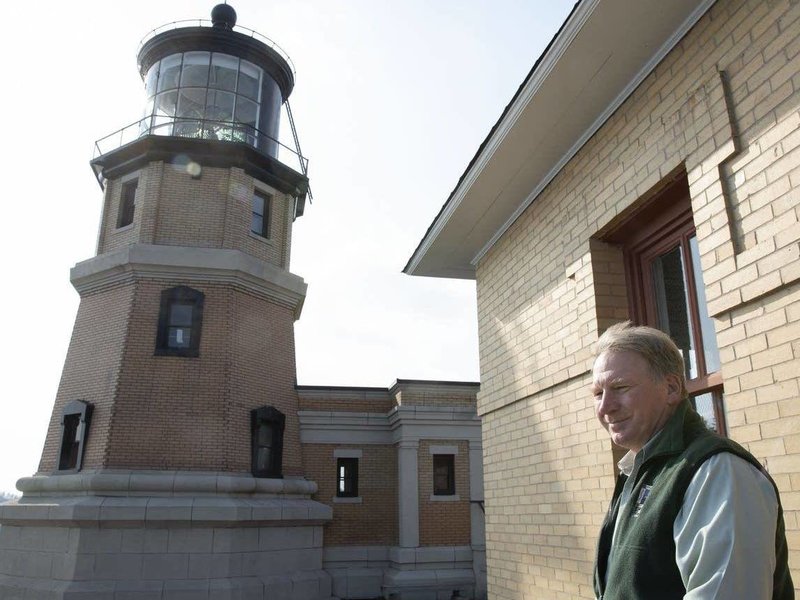LITTLE BREWSTER ISLAND, Boston Harbor (Reuters Life!) - The sole remaining lighthouse keeper in the United States may be the last one but she isn’t about to disappear.
Sally Snowman stands in front of Boston Light on Little Brewster Island in Boston Harbor, Massachusetts May 15, 2008. REUTERS/Brian Snyder
Sally Snowman, 56, is part historian, part tour guide and part maintenance worker who tends Boston Light, a beacon that rises 89 feet (27 meter) on its own island and had guided sailors for almost three centuries.
Her charge, and specifically the 12-sided rotating lens that casts its beam 27 nautical miles out to sea, fills her with a great sense of security.
“When you’re out at night on the island, you can actually see the 12 rays,” said the ex-schoolteacher. “It actually looks like the rays are going out to the curvature of the earth and it feels so protected, like nothing’s going to harm me. It’s awesome.”

The U.S. Coast Guard has automated the other 278 federally run lighthouses, finding this a more cost-effective way to manage navigational aids that have become less critical since the advent of global positioning systems that harness satellite technology.
But Boston Light, which in 1716 became the first lighthouse in the former British colonies, keeps its keeper thanks to Massachusetts Sen. Edward Kennedy who two decades ago helped push through legislation requiring a full-time attendant.
Snowman got the job in 2003 when the Coast Guard decided it could be held by a civilian. Now she resides on the three-acre
island for up to a week at a time.
She makes sure the lighthouse, keeper’s cottage and other buildings are maintained, the 1,000-watt light is lit, and the grounds are in shape for the 4,000 tourists who travel the nine nautical miles from Boston Harbor each year.
RADIATING HOPE AND SECURITY
Snowman dresses the part, wearing a bonnet and long dress to reflect how women dressed in 1783 when the Commonwealth of Massachusetts rebuilt the tower that was blown up by retreating British troops in 1776, as the Revolutionary War got underway.
Twice a day she walks the island’s perimeter to inspect its buildings, making sure that the light is still drawing power from an undersea cable stretching from the mainland, and that the island’s water and communications systems work properly.
In between, she oversees a crew of about 100 volunteers who help to take weather readings and fill the hundreds of tiny holes that pock the island, thanks to a population of muskrats.
Automation is not the only change facing lighthouses.
As navigators rely on other technologies to find their way, the U.S. government has begun selling or donating to historic preservation groups lights no longer necessary for navigation.

More than 300 lights have passed into private hands this way, according to Coast Guard officials.
But for recreational boaters and small fishing vessels, which represent a sizable chunk of Boston Harbor traffic, the lights still play a role.
“They help with approaches because they can be seen from a great distance away,” said David Bryan, general manager of the Boston Sailing Club, which teaches sailing and navigation.
“If the idea is that now everyone is using GPS and you don’t need light houses, I would say that redundant information is very important when navigating.”
“For many, it has a sense of hope and spirituality, not religion, but spirituality,” she said in an interview atop the tower, looking out over Boston Harbor. “They look at it and see it as a coming home and safety.”
